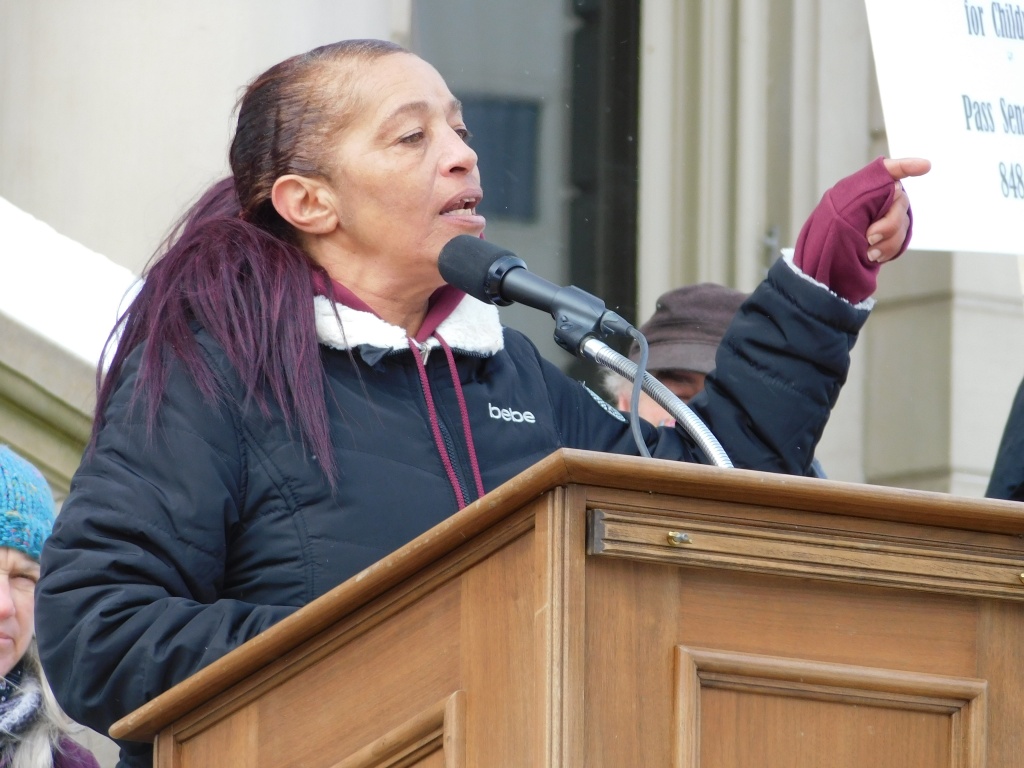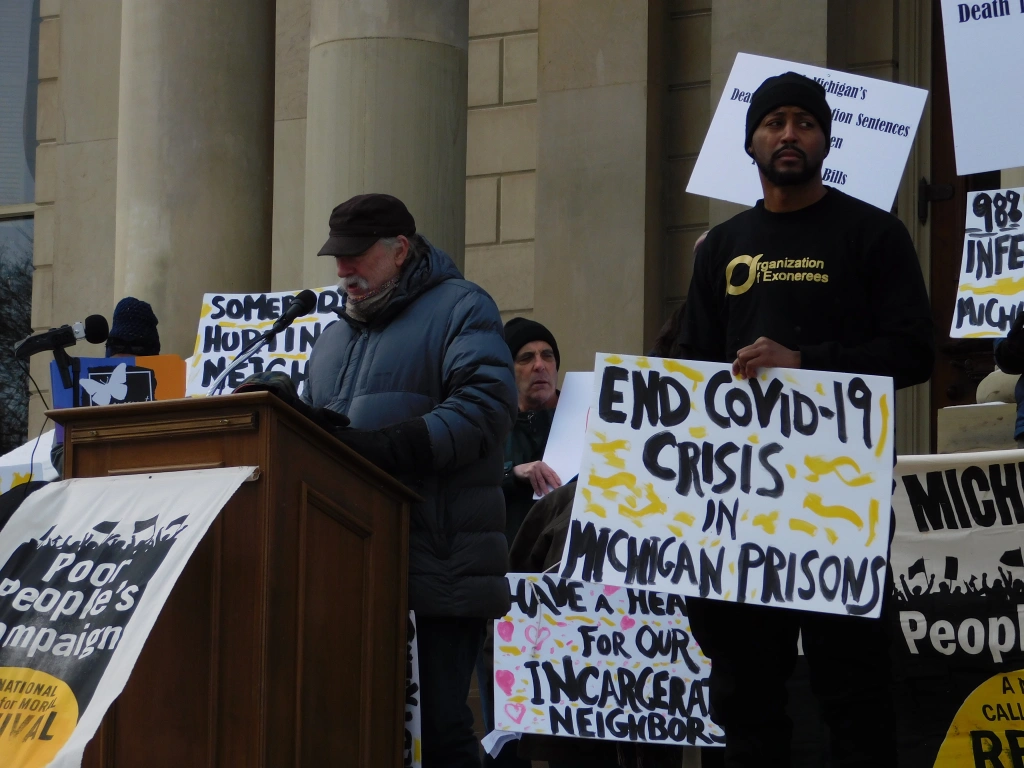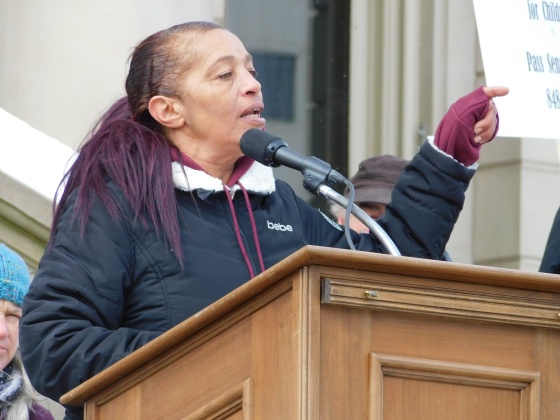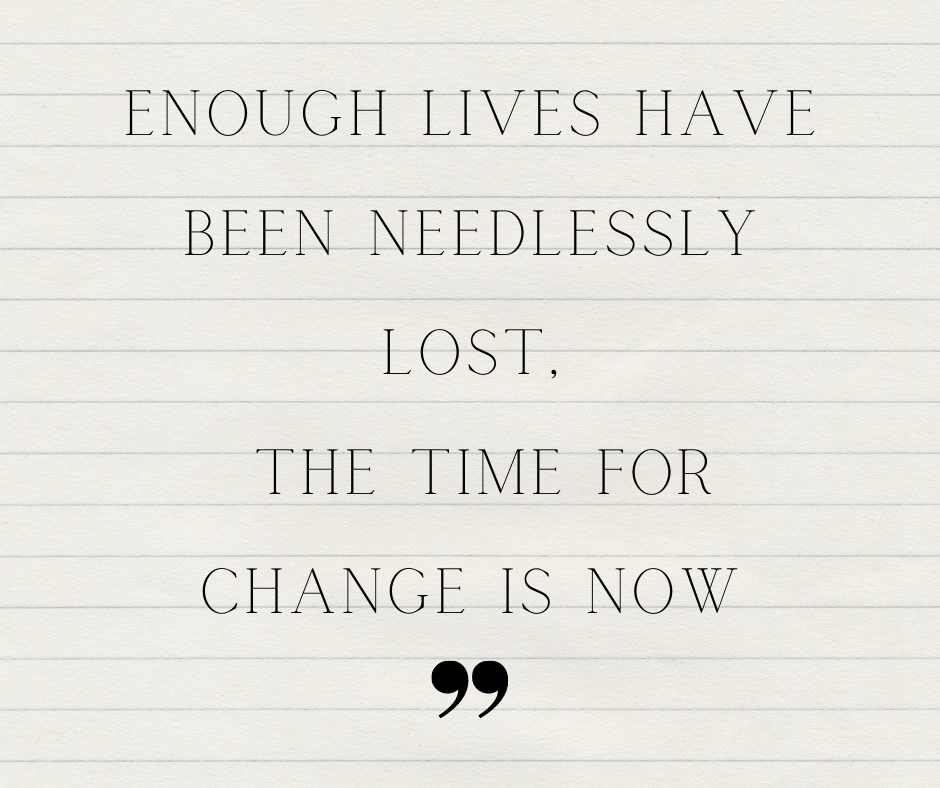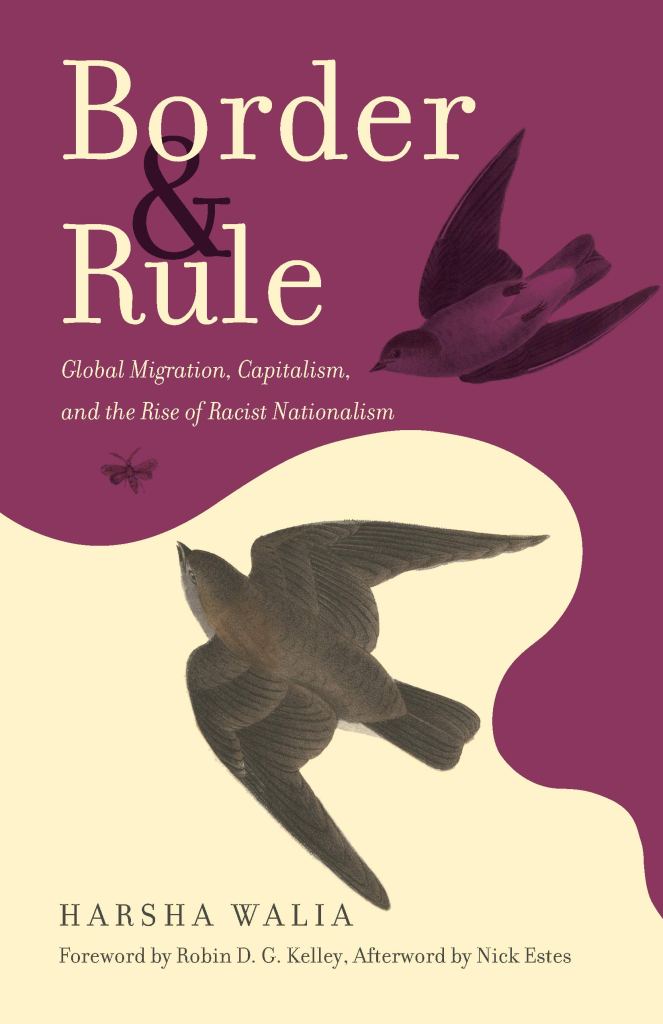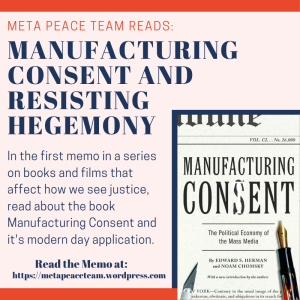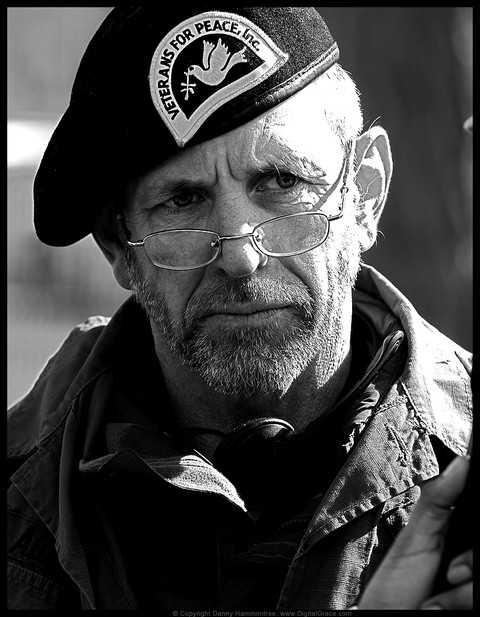By: Luke Adams, MPT Scholar Intern
A while back, Kim Redigan and I were talking, and she mentioned how every year in her Catholic Social Teaching class, she attempts to screen Spike Lee’s 1989 classic Do the Right Thing. Since then, I’ve had the idea of a movie list that could be used as a potential recommendation for screenings (both as part of a curriculum or for MPT). While I’m doing this Memo series, I feel like I might as well do a For Your Consideration list for potential private screenings. Who knows, maybe this could culminate in some sort of screening soon.
I’ve set a few parameters for this memo. I’ve decided to focus squarely on narrative films instead of documentaries. Documentaries are more than worthwhile but I also feel that narrative films are easier to article lessons from in some ways. I’ll also only be writing about films with political connotations as a central theme. I could write all day about how Fight Club is a brilliant deconstruction of the masculine ego or how The Irishman is very much about the death of the American dream. However, both analyses are secondary to the point. Finally, all of these movies have to be of high quality. 2013’s Mandela: Long Walk to Freedom is highly informational on the life of Nelson Mandela, but unfortunately makes for a slog of a movie with terrible editing to boot. This also means excluding Oscar-bait issue-drama sensationalism like Crash or Dead Man Walking.
————————————————
Bamboozled (2000, dir. Spike Lee)
For several decades now, White America’s relationship to black culture has been largely cannibalistic. To White America, blackness is an aesthetic fetish to be co-opted for cheap thrills as a tourist caricature of urban life: blackness is fetishized as sexier, smoother, funkier, and more aggressive, but it is not ordained with enough perceived intelligence for white people to ever want to truly empathize with. Black culture is only growing more prominent (a net social good, I should add), but many of the most popular representations (even outlets like BET) opt for sensationalized, negative depictions of blackness. This is an age of simulated minstrelsy.
These conclusions that Bamboozled made are still (mostly) very present to this day in American culture. In Bamboozled, two starving street performers join forces with a disgruntled TV exec to create a true flop: a modern-day minstrel show, complete with full blackface. In the tradition of The Producers before it, the show accidentally becomes a hit. Unlike the ending to Mel Brooks’ masterpiece, however, the program continues far beyond this. White people (and eventually some black people) flock to the show in droves, turning it into a nationwide phenomenon. Blackface fully reenters American culture, advertising seizes upon in countless marketing campaigns, and even children begin to take tap-dancing classes to emulate the new stars of minstrelsy. These are all deeply disturbing images, but they leave no stone unturned in examining just how toxic American culture really is. I don’t think Spike Lee has ever made as vicious of a film as this, and I fully believe that he was entirely justified in doing so.
I have no problem saying that this movie looks incredibly dated: Spike shot almost all of it on low-budget digital film that only looks worse every passing year. But what it lacks in technical strength, it more than makes up for in its biting humor, and for asking some hard questions: did blackface ever leave the collective imagination, or did it just change its shape? Can we really divorce ourselves from the images we consume? Just how deeply has Madison Ave’s cultural spectacle deformed our visions of reality? What is “real”, anyhow?
The Florida Project (2017, dir. Sean Baker)
The Florida Project is the story of three children growing up in a motel outside of Disney World in Florida. The lead child Mooney is raised by Halley, a single mother who has recently lost her job as a stripper, affecting her benefits. Halley’s struggle to provide her kids with a nice childhood is mostly seen through the eyes of Mooney, which offers a perspective where the specter of poverty lingers without taking up most of the frame. However, the movie also never lets you resign from thinking about Halley’s struggle. Moreover, it’s also not afraid to ask us to empathize with people who are in many ways unlikeable or troubled.
Of all the movies on this list, The Florida Project is the least focused on proving a point to the audience. It’s ultimately a slice-of-life movie where the social themes make up the texture and feel of the movie. This makes it just a bit more subtle in its messaging and especially in its presentation.
Disney world’s shadow looms over the whole movie, as both an image of childlike wonder and brutal hyper-capitalism. Most of the appeal of this movie comes from taking in the environments and the plot slowly peels itself outwards. The mileage of how much this movie will find with you is based on how much you’re willing to give it. If you’re willing to submit to it, there’s a lot of nuance and casual brilliance to be found here.
I, Daniel Blake (2016, dir. Ken Loach)
Daniel Blake is 59 years old when he suffers from a heart attack. After his doctor recommends him not to return to his job as a carpenter, he applies for Disability Allowance. However, the British government does not offer him this based on him allegedly being “fit to work”. Daniel can technically apply for Unemployment Allowance, but this is much more meager, and requires him to verify that he is spending over 30 hours a week looking for employment. This seems completely counterproductive to any sort of human aid. To put things worse, Daniel does not know how to use the computer, which puts him at an immense disadvantage in navigating through this labyrinth of documentation.
I, Daniel Blake is a long, hard look at a welfare state that is more intent on policing the poor than administering aid. The British government’s intention to make Daniel prove his worth as a member of the labor force is deeply upsetting, but it also cuts right at the truth of neoliberal austerity. Daniel is not the only victim of this system either: placed alongside him in the queue is Katie, a single mother whose poverty prompts her to look for aid as well. Daniel’s quest to figure out how to work digital forms also forces him to connect with the young men in the apartment below him who scrape up rent by bootlegging sneakers. The scope of who the state decides to persecute as a matter of maintenance is massive, and this movie is excellent at creating a sense of solidarity between its largely working-class cast.
The title is the key here: Daniel Blake is a man whose stubbornness becomes an unlikely virtue in the face of a state that wants to process him into oblivion. He refuses to have his humanity reduced to a number on a screen, and his struggle makes for some of the most arresting social commentary in recent memory.
La Haine (1995, dir. Matthieu Kossovitz)
La Haine is often considered the French counterpart to Do the Right Thing. It depicts many of the same conditions of poverty and crumbling race relations from across the sea. However, La Haine differs from Spike’s masterpiece in a few key ways. It’s darker and grittier, with characters that are much more flawed than even the nuanced characters of Spike’s drama. Whereas the ending of Do the Right Thing was notoriously mournful and thoughtful, a deep sense of dread pervades the entire atmosphere of La Haine.
This movie takes place the night after a riot in the Paris projects, something that sparked in response to the violent police beating of an immigrant man named Abdel. In the aftermath of this, three friends – Vinz, Said, and Hubert – wander around the city in the riot’s aftermath, waiting to hear whether their friend has survived. All three (one Jewish, one Arab, and one black man, respectively) are the disillusioned children of poverty and discrimination that the underclass of Paris suffers from. Vinz threatens that if Abdel dies, he will kill the first police officer he sees so that his life will mean something. A parable is repeated throughout the film about a society that’s spiraling downwards towards a crash. As the story goes, it’s not how the bad the crash is that’s important, but how we will manage to pick ourselves up from this dysfunction.
This film is also a very interesting period piece for 1995, when hip-hop culture had started to assimilate in working-class communities around the world. The citizens of the Paris projects blast KRS-One and Cypress Hill from their windows. Break-dancers show off their moves in public spaces. In some scenes, songs from French rappers play from taxicab radios. This movie’s style carries with it a subtext about working class solidarity, and how the diasporas of the world have been given refuge by rap’s portrayal of social distortion and city life.
Parasite (2019, dir. Bong Joon-Ho)
Bong Joon-Ho’s Parasite has become the most notorious social drama of the decade since its release in 2019. Not only did it win the Palme D’Or when it debuted at Cannes, but it also swept Best Picture in the US, becoming the first foreign language to do so (a blighted category, but still good to see nonetheless). Once you watch it, it’ll become increasingly obvious why it is so well-acclaimed. Parasite is a Neo-Hitchcockian masterpiece, and one of the most brutal interrogations of class warfare in modern history.
The film begins by following the lives of the Kim family. They live in a semi-underground apartment in a working-class neighborhood in South Korea. The Kims scrape enough together to get by through odd jobs and by stealing the neighbors’ wi-fi. However, an opportunity presents itself when the son, Kim Ki-Woo, is offered an opportunity by his rich friend to take his job as an English tutor for the daughter of the illustrious Park family. The twist here is that Ki-Woo allies with his sister to fake his credentials, from his formal education to his actual status as a tutor. However, the utter obliviousness of the Parks allows him to fake it until he makes it, prompting more schemes from his family: as caregivers with fake company cards, drivers who conceal their resume behind the gift of gab, and star chefs who conceal the fact that they’re. There’s a brilliant commentary here about how success under capitalism is more based in nepotism amongst the capitalized than any real sort of basis.
Since the movie’s narrative relies on several astonishing twists, I won’t spoil anything from here. But this movie has layers on layers of commentary, some of which reaches truly dark and ominous levels. One major theme is the psychology of wealth, and Bong is excellent at determining the exact point at which we start punishing our fellow laborers for scraping by to survive. The Kims are worth rooting for as the movie begins, but as circumstances change, the movie demands their accountability: not for their actions towards to Parks, but for actions that are far more despicable. In a world where the ruling class maintains their stranglehold on the rest of the world, who are the true parasites? Is it right to spurn the other flies on the belly of a great hippo just because you’re capable of hiding yourself?
Philadelphia (1993, dir. Jonathan Demme)
There’s a lot of things that would read as red flags surrounding this film’s release; Jonathan Demme’s last movie The Silence of the Lambs swept the Oscars in 1992 – a venue where Best Picture is often a red flag for a social drama (see: the continued awfulness of movies like Green Book and Crash). On top of this, TSotL received widespread condemnation from the queer community for its transphobia in the portrayal of Buffalo Bill. These are not conditions from which nuanced issue dramas – especially related to LGBTQ rights – are typically born. And yet, in terms of how it approaches its subject matter, Philadelphia is an act of pure humanism, and a sublime act of penance from Demme as a filmmaker.
Philadelphia follows Andrew Beckett, a senior associate at a top law firm in Philadelphia. Beckett is a closeted gay man who lives with his partner Miguel, who has been recently been diagnosed with AIDS. When his work is sabotaged by his partners in a covert way of firing him, Beckett decides to sue his former employer. However, given that this movie takes place at the height of the AIDS crisis, he finds that his friends are numbered, and he initially is forced to represent himself. Parallel to him is Joe Miller, a black personal injury attorney who initially is afraid of AIDS and gay people in general. The process through which he ends up representing Beckett involves a deep reflection on empathy, and solidarity between groups that have both been heavily persecuted by mainstream society.
This movie reaches a good blend of depicting the reality of the AIDS crisis and the social ostracism that came with it without feeling stiff or indulgent in how it treats suffering. It’s just as much a celebration of gay life on film as it is a stark shakedown of what said life means to American society. Demme takes special attention to making us recognize Beckett as a human being first and foremost. When held in comparison to dramas like Green Book where characters virtually only exist as mouthpieces for the message, this is more than welcome.
Serpico (1973, dir. Sidney Lumet)
Some of Lumet’s other films – especially 12 Angry Men and Network – are equally deserving of attention as superb social dramas. However, in an age of endless violence stemming from militarized police, Serpico is especially prescient. This film. chronicles the real-life events of Frank Serpico, who served as an undercover vice detective for the NYPD. This career puts him head-first into a sea of corruption, at both the local level and the entire infrastructure of the NYPD. His refusal to take bribes from petty dealers initially makes him a target by his fellow officers, which is only amplified when his anti-corruption crusade puts a target on his back. This is a world where no good deed goes unpunished, and Serpico’s struggle to merely be good in a world of cynical corruption is truly captivating (to say nothing of how well Al Pacino emulates this frustration in through his title role).
My favorite scene in the entire movie (outside of perhaps the classic office meltdown scene) comes early on, before any of the real corruption starts. After arresting three men for attempted rape the night before, Serpico confronts one of the boys. Seeing that he is perhaps the least guilty of the three, he does something totally unexpected: he pulls him aside into a local shop, buys him a cup of coffee, and says that he shouldn’t take the fall for his friends. Rape is surely a terrible crime that demands accountability, but this scene unmasks so much just through subtle gestures. Many criminals are frightened, distraught men who choose horrific ways to cope. The fact that this movie can successfully portray even hardened criminals as real humans is quietly radical.
Sicario (2015, dir. Denis Villeneuve)
The action and military thriller genres aren’t typically known for their humanism. Jack Bauer’s use of torture in 24 was always portrayed as justified to stop nuclear bombs or deadly bioweapons from destroying post-9/11 America. Movies like Black Hawk Down and American Sniper use the façade of gritty “realism” to shy away from how little humanity we ordain to those who we perceive as our enemies. Sicario is the antithesis to this. This movie follows FBI agent Kate Macer as she investigates the Sonora cartel, bringing her into the heart of darkness of both the drug war and the American security state. This is not just a tepid critique of a mostly just system (which a great deal of media like this defaults to), but a withering condemnation of American intelligence, counterinsurgency, and hyper militarism. Given how stringent the Pentagon is with Standards & Practices, I have no idea how this was made.
There are several moral quandaries that tie this story together, but at the center of it all is a narrative about the cyclical, futile nature of violence. Deeply flawed characters are humanized as living people, and some characters who seem initially just in their intentions turn out to be the most sadistic forces of all. I won’t spoil the twists this movie takes, but the final few scenes reflect with brutal honesty the consequences of a world where mass violence has become mundane.
Sorry to Bother You (2018, dir. Boots Riley)
Part of me already regrets putting this on the list. This is easily the raunchiest, most out-of-pocket, and bizarre movie on this list, especially for a comedy. However, it’s already become one of the most significant and on-point social satires of our time. It would be wrong of me to not recommend something as creative and energetic as this.
The plot of Sorry to Bother You revolves around Cassius Green, a black Oakland resident who’s flat broke; he’s unemployed, he pays for gas in change, and he lives in his uncle’s garage. Tensions are rising, as his uncle is considering selling himself into lifetime indentured labor to Worryfree (an ostensible Amazon surrogate run by CEO Steve Lift). As a last resort, Cassius turns to telemarketing, where he discovers a secret: he becomes infinitely more successful at sales when he puts on his “white voice” over the phone. Not just any old white voice either, but the calculated image of Ned Flanders approachability that they “wished they sound like”. Cassius becomes wildly successful at this, moving up the ranks into bigger deals and bigger clients until he eventually reaches the world of military contracting. However, this puts him at odds with his former co-workers who wish to unionize, and his girlfriend Detroit, who wishes to depict the horrors of colonialism and capitalism through her art. Going any further would spoil the fun, but this is a wonderful dissection of how capitalism erodes human interaction, alienates our labor, and commodifies even the resistance to its own commercialization.
Director Boots Riley has a long history of radicalism, namely as the lead MC in the rap-rock groups The Coup and Streetsweeper Social Club (a group featuring guitarist and fellow activist Tom Morello). Boots is scathing in his critiques of late capitalism, but that’s also because he genuinely believes in the possibility for a better world. Sorry to Bother You is a brilliant exercise in solidarity: something that believes that we are only going to become free through each other. When you consider what can possibly be taken from a movie, that’s hard to beat.






